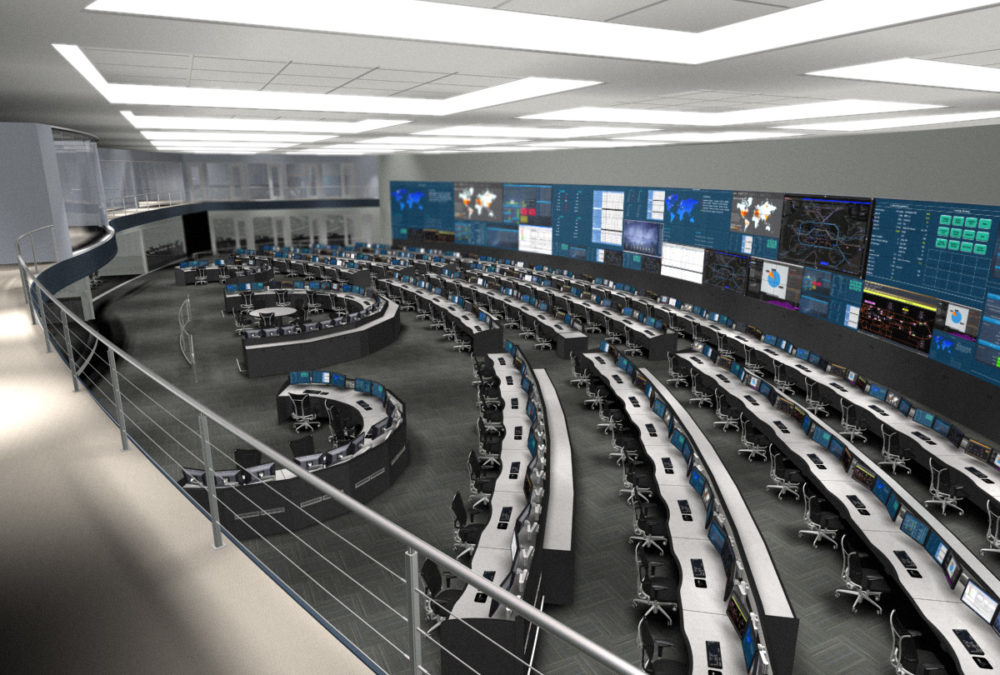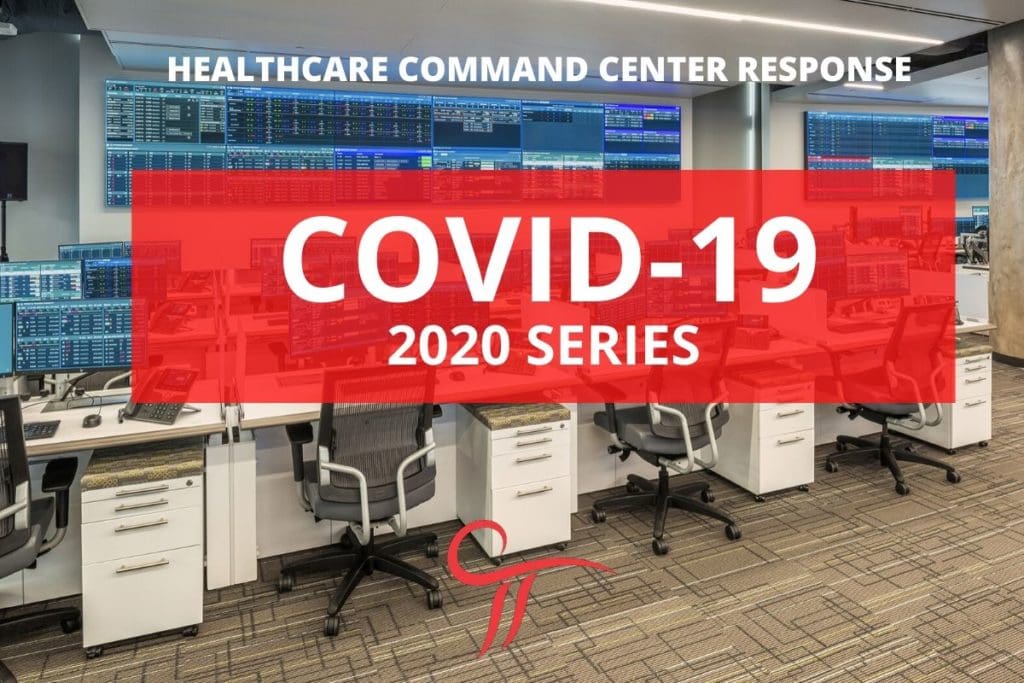Over the past several weeks, we have been discussing how various mission critical environments are responding to COVID-19. In this installment, we will discuss command centers in healthcare environments, which are on the frontlines of the pandemic response. [related]
From admission data to operating room schedules to patient movement tracking, there are myriad ways that mission critical technology is applied to improve patient care in hospitals.
A central command center’s potential to improve patient care is multifaceted: with continuous digital monitoring, hospital staff can track incoming ambulances, streamline arrival, monitor status of operating rooms and track patient movement.
By taking advantage of the type of data that can be displayed on video wall systems, hospitals can use clinical operation centers to ensure that they make the most of their available space and to improve the patient experience, which is especially important during a public health crisis.
Centralized heathcare command centers that combine employees from various hospital departments also contribute to improved collaboration across all aspects of hospital management.
By connecting departments within a single space, important processes such as admissions, transfers, operating room management, and even staffing can be streamlined and more effectively implemented.
Furthermore, a command center helps to facilitate efficient coordination with other regional medical centers. Communication between regional medical centers is critical in the event of a local outbreak in order to contain and properly treat the coronavirus.
Hospitals Activate Incident Command Centers
Many hospitals have activated incident command centers, which act like emergency operations centers specifically based out of healthcare campuses.
St. Luke’s University Health Network in Bethlehem, Pa., has organized an Incident Command Center based on principles set by the Federal Emergency Management Agency.
Running 24/7, the incident command center is staffed by personnel who have undergone emergency preparedness training and have continually practiced emergency preparedness.
Each hospital within the St. Luke’s network has its own incident command center, each of which can solicit guidance and support from the main Network Incident Command Center. This main command center also works in coordination with local, state and federal agencies to manage the pandemic.
There are any number of questions an incident command center faces during the COVID-19 pandemic. These include where patients should be placed and how those areas will be staffed.
Another question that hospitals currently grapple with is “how might we prevent infected patients from transmitting the virus to other patients or personnel?”
A centralized healthcare command center focused on every detail of a hospitals’ operations during the pandemic allows staff to answer these questions in an informed way with the most up-to-date data at hand.
Union Health Hospital in Terre Haute, Ind., activated an Incident Command Center that has already adjusted hospital response.
“Everything filters through us,” said EMS preparedness coordinator Barry Nicoson, an important component of an incident command center. “If we have one center to make the decisions, then the decisions can stay consistent.”
AI Aids COVID-19 Preparedness
The CHI Franciscan hospital system in western Washington has a large command center, which they call “mission control,” that allows for quick, efficient response to COVID-19.
Their mission control features an expansive video wall with screens that share real-time data such as how many ICU beds are available in each of the system’s eight hospitals, how many patients need rooms, and how long each patient has been waiting to be placed.
With increasing worry about hospital capacities, using a command center to monitor allows for efficient management of hospital beds.
The video wall in CHI Franciscan also gives a birds-eye view of other important data such as transferring patients, emergency dispatch, and managing staff. All of this, important under normal circumstances, is even more vital as hospitals across the country face a pandemic.
CHI Franciscan’s Mission Control Center also features an artificial intelligence (AI) system that provides forecasting to help hospital staff proactively manage the strain on their health system.
The AI uses information from the World Health Organization such as infection growth rates, percentage of patients requiring ventilation, and mortality rates to predict the demands they can expect to be placed on their hospital system.
These projections allow the hospital network to prepare for the care they will need to provide for future COVID-19 patients.
Using Mission Control During Pandemic
Command centers in healthcare environments are truly on the front lines of the fight against COVID-19. This includes one of our clients, AdventHealth Hospital system in Orlando, Fla.
We had the privilege of creating their mission control in 2019, in collaboration with our partners at GE Healthcare.
The space, which features a large video wall made of 60 tile monitors, manages the operations of 9 hospitals in south Florida. It is “unlike any other healthcare system in the nation right now,” said Dr. Sanjay Pattani, mission control medical director.
Doctors, nurses, and other healthcare specialists monitor every single patient across all eight of AdventHealth’s hospitals – a number that can total between 1,800 and 2,200 patients on any given day.
The real-time data displayed on the 24/7 video wall can provide pivotal insight for the treatment of COVID-19 patients.
Through mission control, decision-makers can track exactly where COVID-19 patients are and who is taking care of them at all times. This allows them to allocate appropriate staff and resources as well as find new beds in the event of a surge.
Mission control’s capabilities allow operators to quickly identify patients within the system that can be transitioned out of an ICU bed to make room for a COVID-19 patient.
According to Pattani, before Mission Control this is a process that would have taken multiple phone calls and communications and ultimately take much longer. Mission Control allows this process, along with many others, to become much more efficient.
New Mission-Critical Methods
Just as the pandemic response is changing day by day, so are new developments for mission critical command centers in healthcare. AdventHealth Mission Control is working on integrating a way to track medical supplies through their data wall.
Constant Technologies’ partner GE Healthcare has also built and deployed new COVID-19 Command Center Tiles, which are decision-support apps. Their Infectious Disease Tile is used to match COVID-19 patients with critical resources and also detects risks and opportunities in real-time.
The second tile they’ve created is the Critical Resources Tile which helps operators manage resources critical to the treatment of the coronavirus such as ventilators, ICUs, and negative pressure beds.
Moments of crisis often remind us how invaluable the multiple types of operations centers involved in emergency response can be.
It’s important that emergency operations centers, medical command centers, and social media monitoring centers be up to date in order to provide efficient, reliable response.
If your mission critical environment hasn’t been updated in several years, the technology may not be as reliable as it should be for round-the-clock use in a crisis situation.


















